
Oh man, I don’t know about you, but I can’t wait to bite into that first cool, crisp slice of cucumber from the garden this year. But before we can do that, we need to get them in the ground.
Here are five fast, easy tips that will get your cucumbers off to a great start this year.
Before you know it, you’ll be up to your eyeballs in delicious crunchy cucumbers. I hope you’ve got room in the pantry for homemade pickles.
1. Would You Like a Side with That?
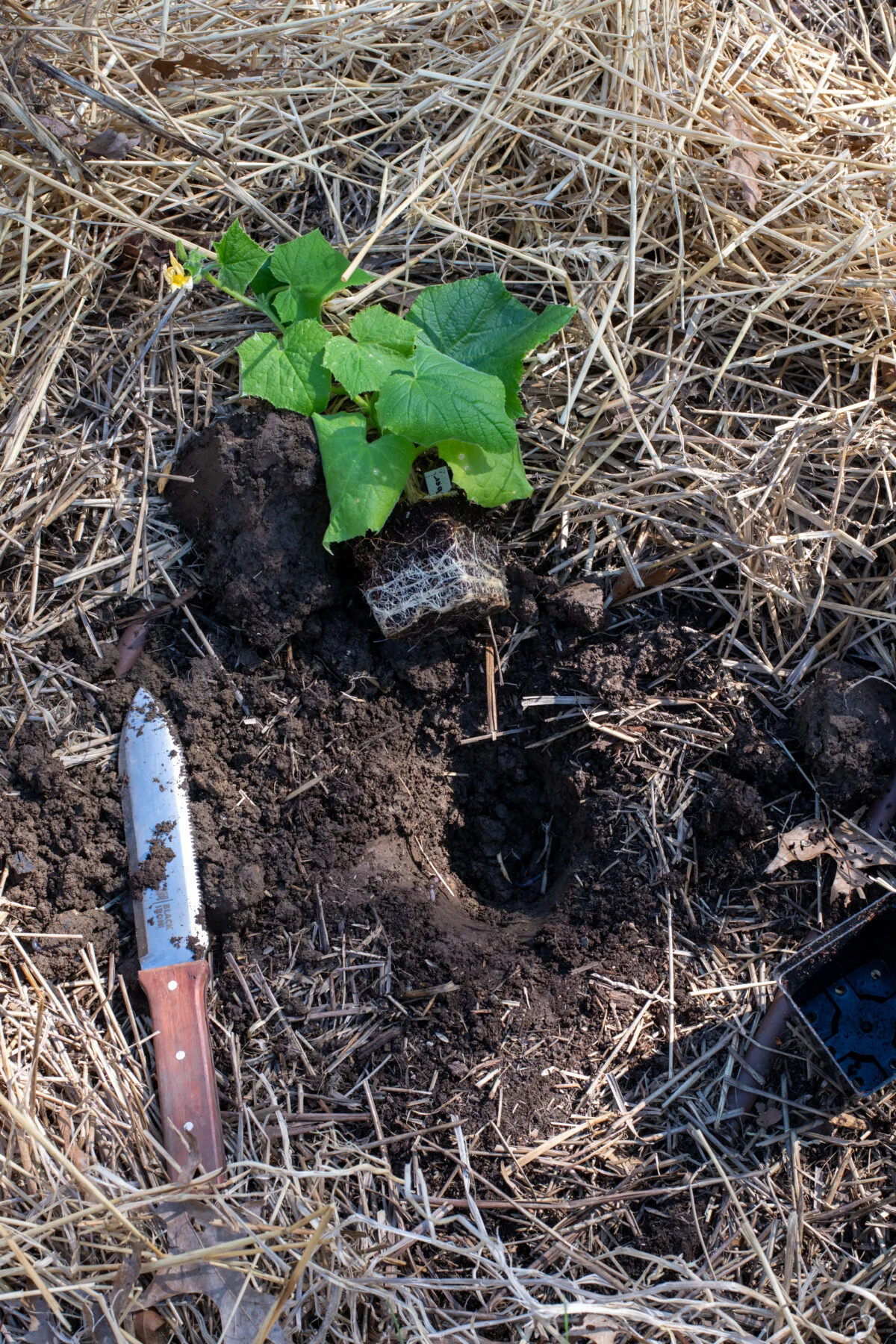
When I plant seedlings, I like to think of it as a plant with a side of something. That’s because this is the one time in the season when you have direct access to the roots, which means you have the opportunity to add a little something on the side, or rather at the bottom.
Don’t plant your cucumber in a bare hole.
Now is the perfect time to add nutrients right where your cucumbers need them – below ground. Before you plop your seedling in that hole, add a little side of something that will give them a boost.
You should definitely be inoculating with mycorrhizae. And a trowel full of worm castings is always good for cukes. (There are so many benefits to adding worm castings to your soil.) If you need a few more ideas of what to add to the hole before you plant your seedling, here are a few great soil amendment suggestions.
2. Pinch Off Blossoms
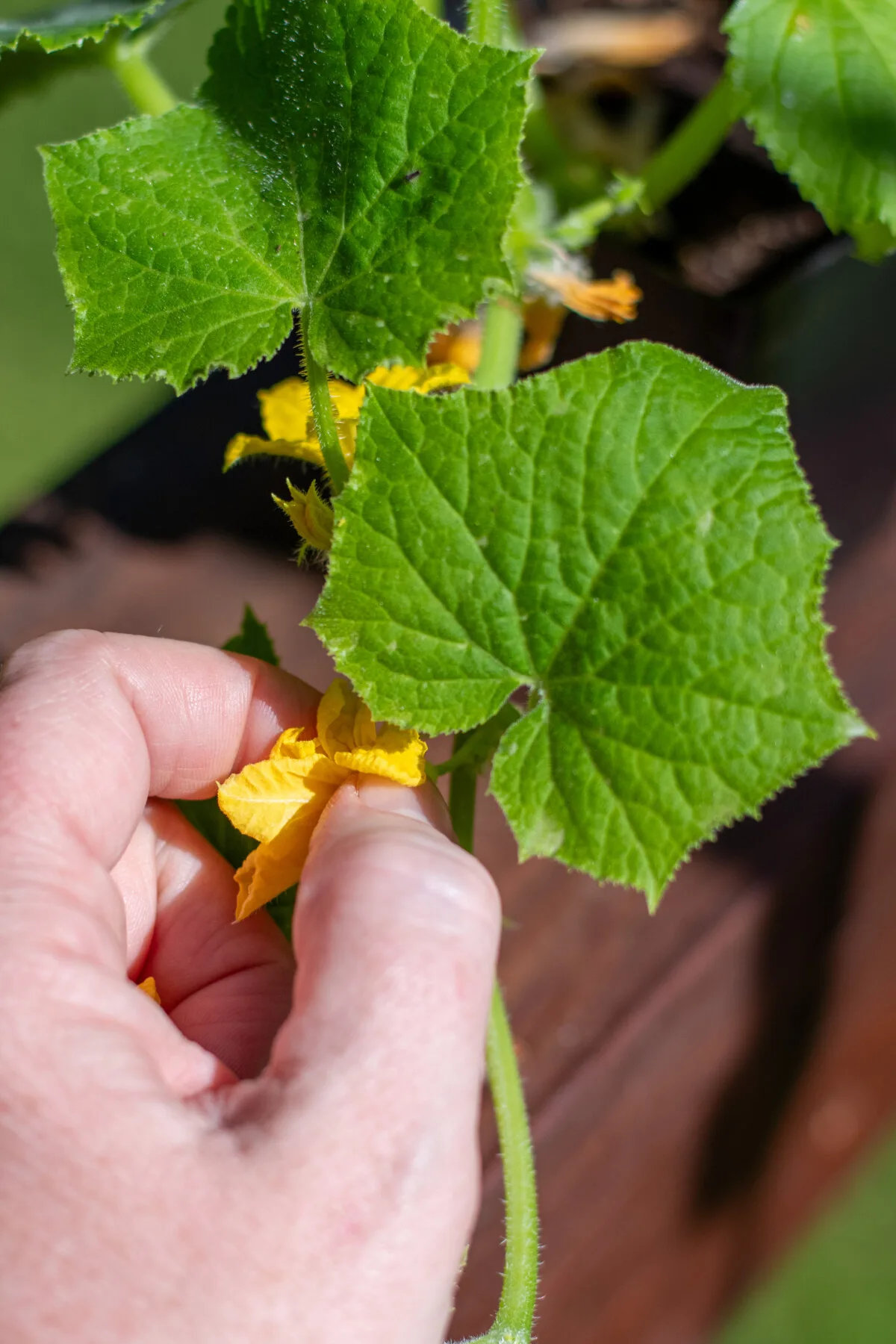
If your cucumber seedlings are getting ahead of themselves and putting out blossoms already, go ahead and pinch them off. Right now, you want the plant to put all of its energy into getting established and growing a sturdy base to provide for all those cucumbers later.
By pinching off new blossoms, the plant will direct its energy into doing just that.
Continue to pinch off new flower buds for the first few weeks. Once you note that the plant is doing well and you can see that it’s growing again, all bets are off. Let those cucumber blossoms multiply!
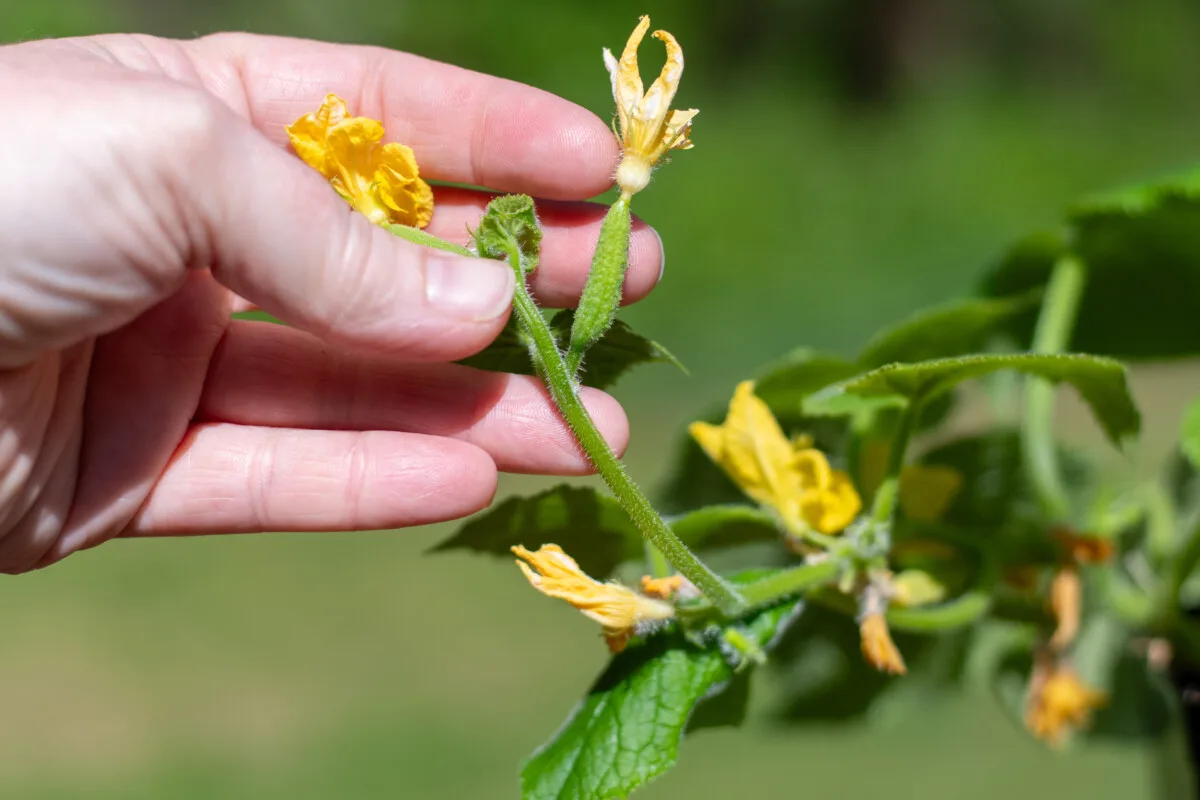
If, after a few weeks, you notice you aren’t getting much fruit from those flowers, you can hand pollinate. Another great way to fix this issue is to plant flowers in your vegetable garden. By creating a veritable pollinator buffet in my veggie garden, I’ve eliminated pollination issues.
3. You’ll Grow Into It
If you have ever received a hand-knit sweater from your grandmother, I’m sure you were told, “You’ll grow into it.” The same goes for cucumber supports.
Regardless of whether you are growing a vining or bush variety, you’ll want to provide cucumbers with support. Now is the time to install that support system. (Here are a few great ideas.)
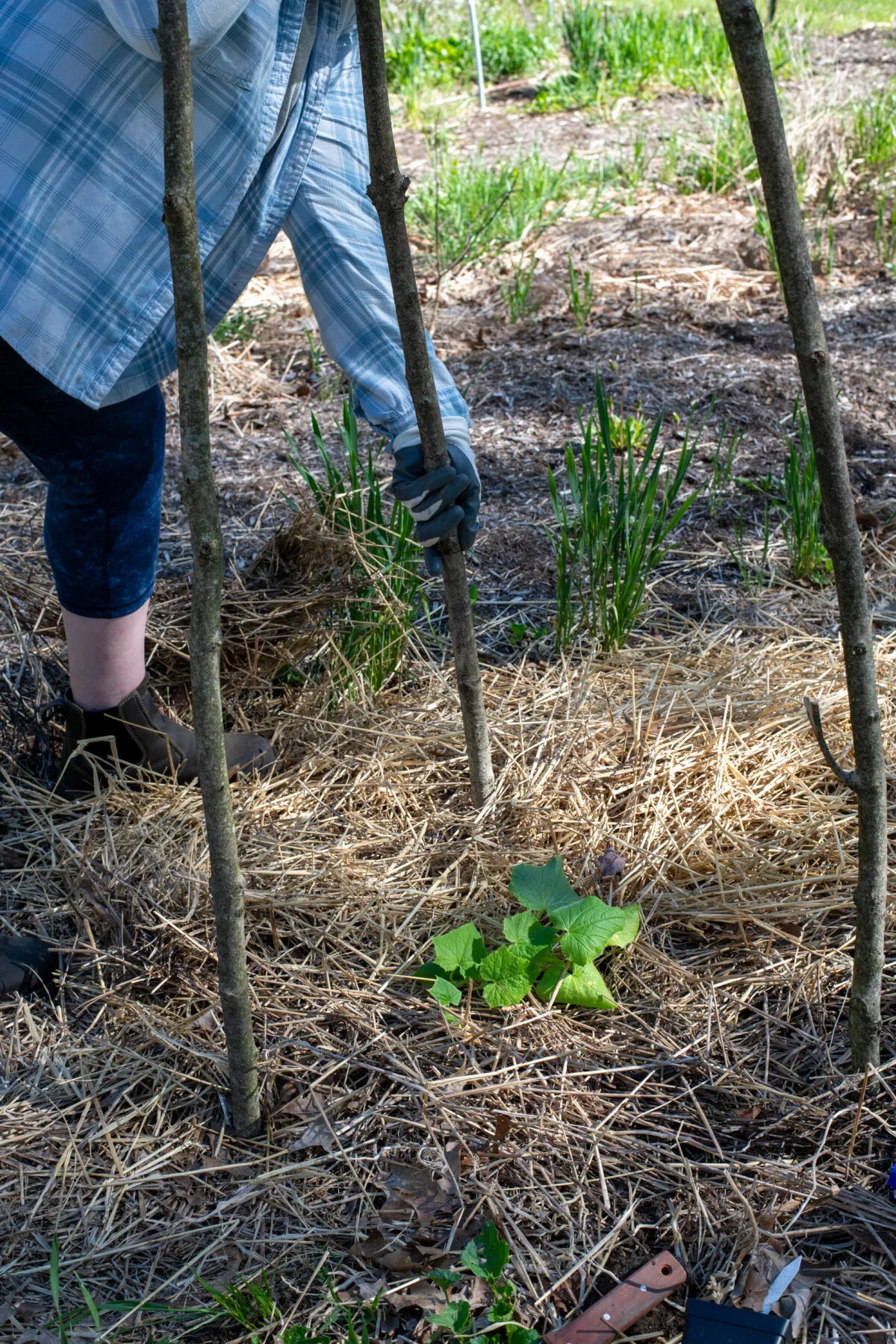
If you wait, you run the risk of disturbing the root system when you push poles into the ground or snapping the main stem when you try to thread the plant up a new means of support. It’s amazing how quickly they start growing in one specific direction, and it’s usually not the direction towards your trellis.
Install your cucumber trellis before you plant for the best results.
Then, just like your sweater, your cucumbers can grow into it.
As your cucumbers grow, depending on the variety, you might want to prune them. Here’s how to do that.
4. Mulch Like You Mean It
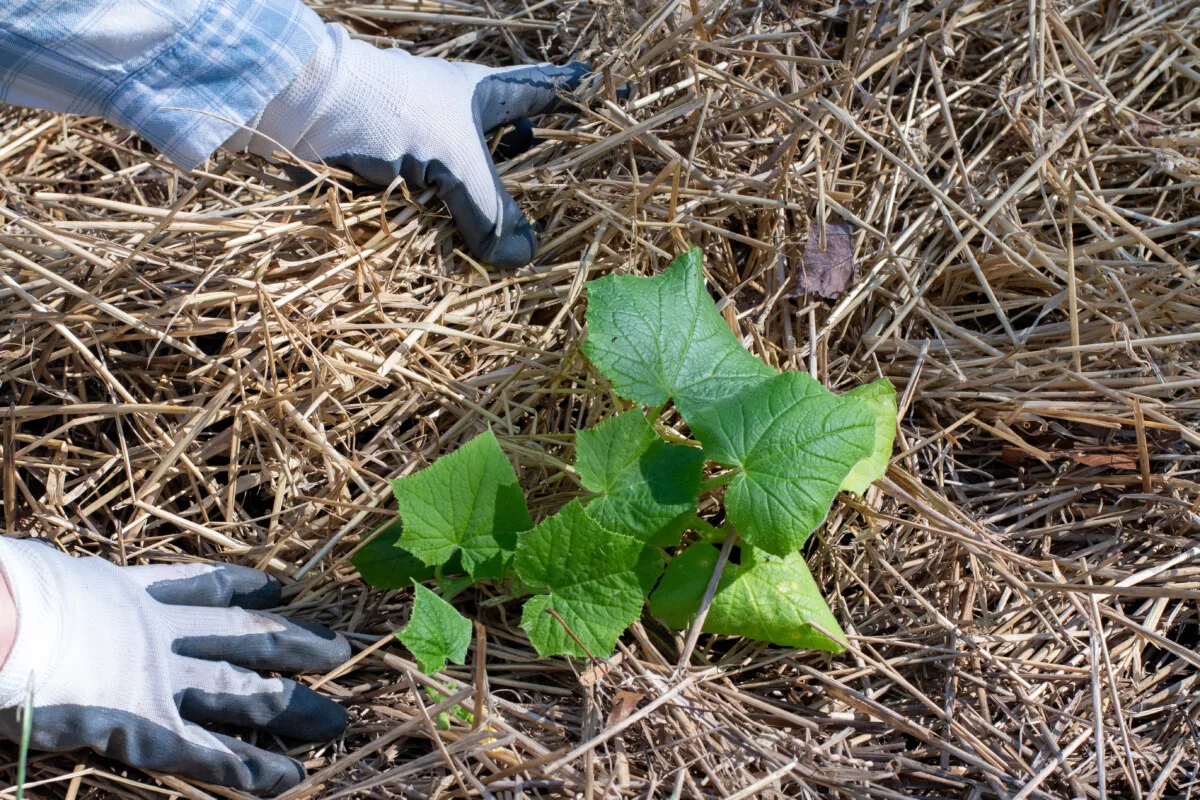
If there’s one thing on this list that’s designed to make your life easier, this is it – mulch! Once you’ve planted your seedling and watered it in well, your work isn’t finished. That is unless you like weeding and watering your plants every other day.
Bare soil is a recipe for disaster – or at least more work for you.
Moisture is lost through bare soil, and weeds are more than happy to fill that space. Not to mention, you’ll be losing soil through erosion whenever it rains. Mulching around the base of your plant solves all of these problems. Mulching can even offer some protection from soil-borne diseases by creating a barrier.
Lay down a 3-4” layer of mulch around your plant. You don’t have to buy mulch; there are quite a few options you likely have around your home.
5. It’s No Conspiracy – Cukes Do Best with a Tin Foil Hat
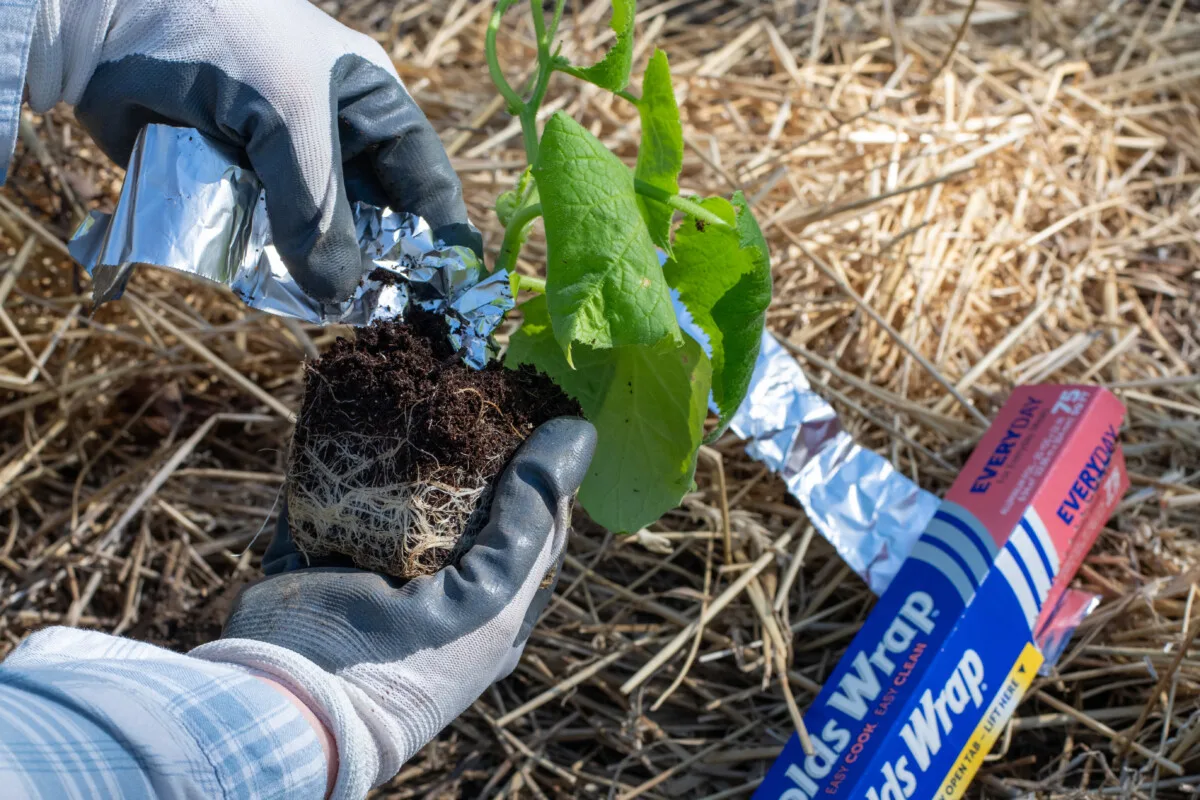
Okay, maybe it’s more of a sock, but trust me on this. There is nothing more disappointing than finding frass (squash vine borer poop that looks like damp sawdust) under your cucumber vines later in the season. After you’ve put in all that work, right when your harvest should be at its peak, your plant starts to die.
Let me tell you, once a squash vine borer is in your plant, it’s almost impossible to save.
Prevent a squash vine borer infestation right from the very start with this simple trick. You see, these pesky bugs emerge from the soil in late spring to early summer (usually late June or early July) and lay a single egg at the base of each plant. Once the little critter emerges from the egg, it bores into the stem and wreaks havoc from the inside out.
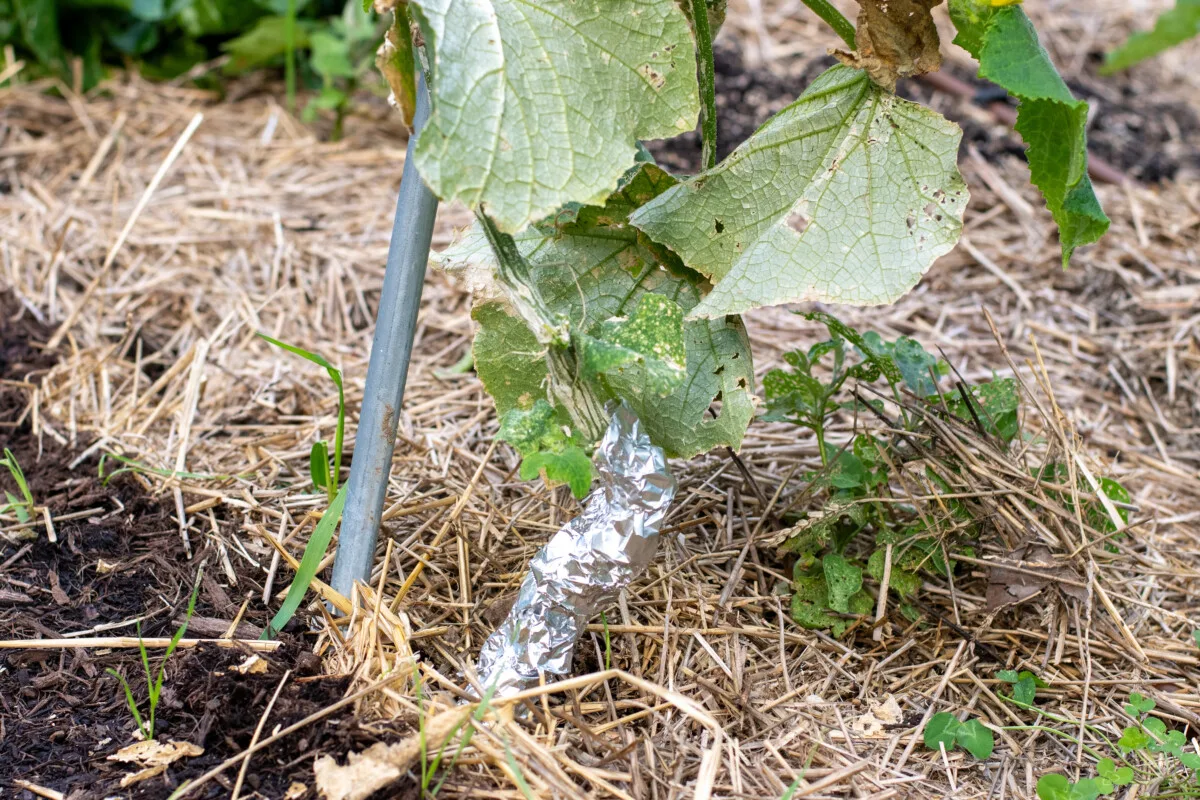
Stop them in their tracks by wrapping the base of each cucumber stem in aluminum foil. Yup, it’s as simple as that. Use thin 1 or 2” wide strips of foil and wrap them around the base of the plant, starting right at the soil up about 6”. You want to overlap the strips so there are no gaps. You also don’t want to wrap the foil so tightly that you’re restricting the stem from growing.
Do this several weeks after you’ve planted your cucumber seedlings but before the period when borers usually emerge from the ground.
With these quick-to-implement tips, you’ll be snacking on cukes before you can say, “Sweet baby gherkins!”
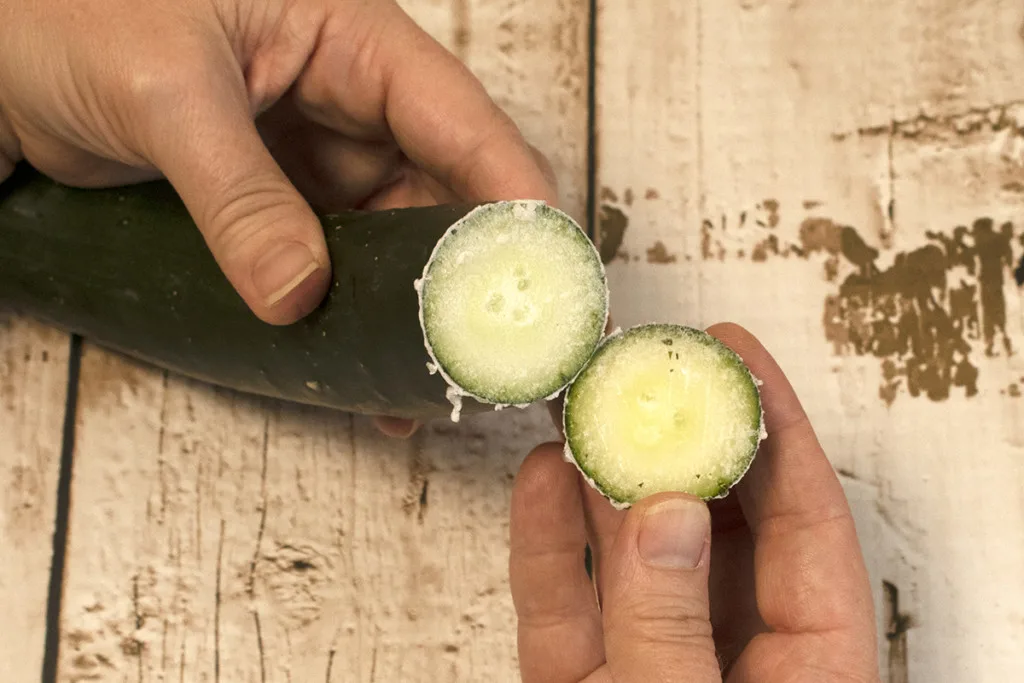
Oh! One more bonus tip before you go – when you do start harvesting those tasty cukes, if you notice some of them are bitter, you’ll want to read this. Not only will it tell you why it happens, but it contains a handy little trick to fix it right away.
Read Next:

Get the famous Rural Sprout newsletter delivered to your inbox.
Including Sunday musings from our editor, Tracey, as well as “What’s Up Wednesday” our roundup of what’s in season and new article updates and alerts.



